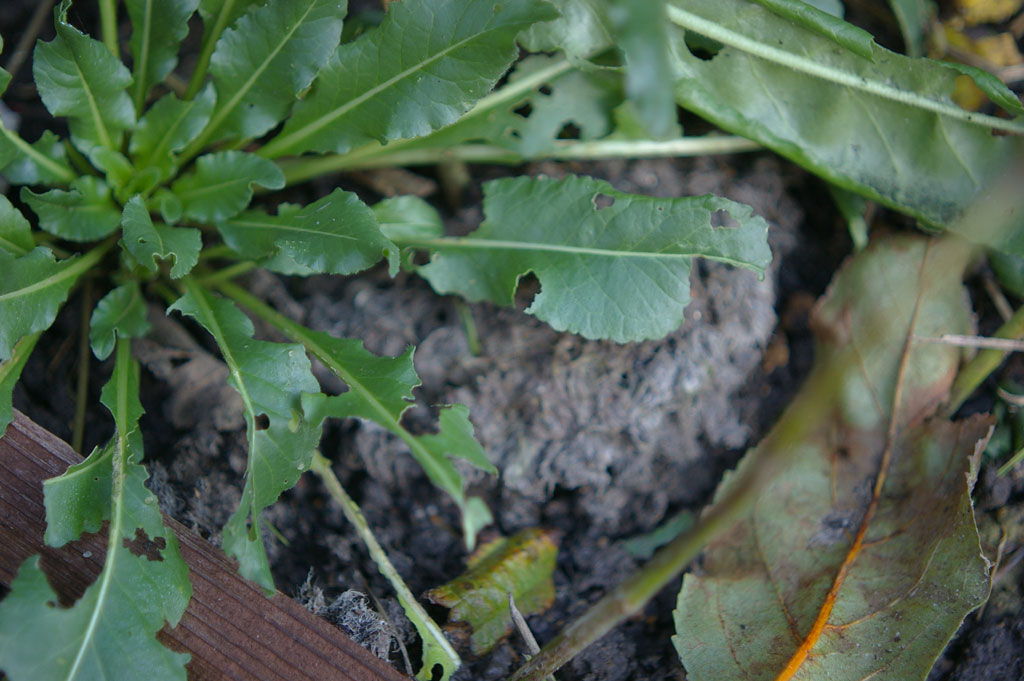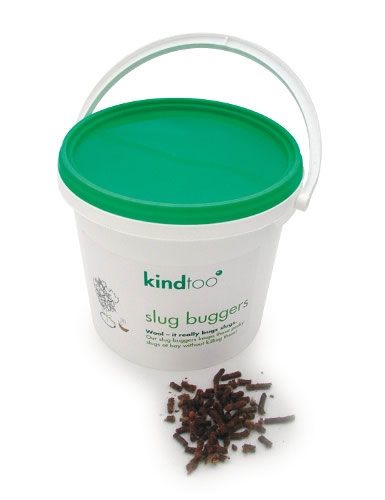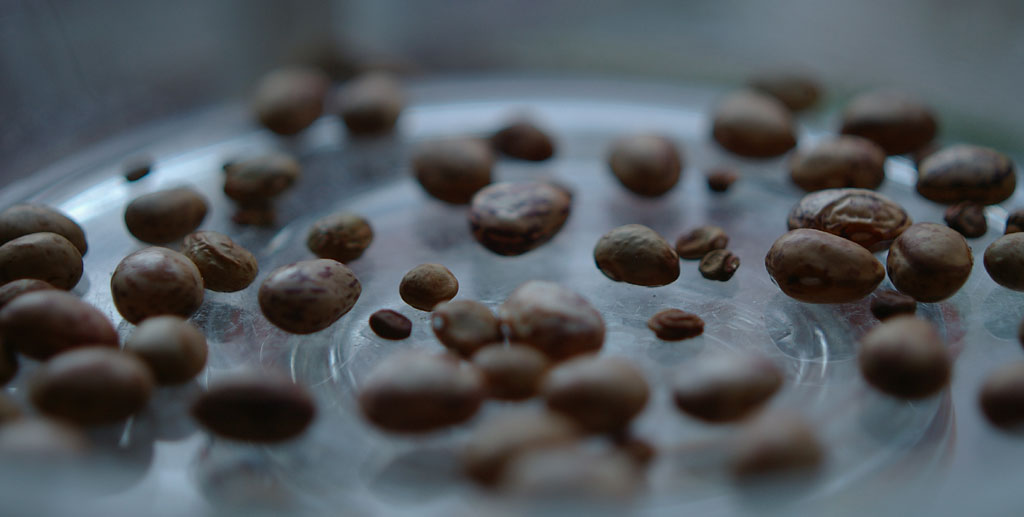I don’t know about you, but this year for me the slugs reached plague proportions what with the wet, humid summer that we had. My first crop of borlotti bean plants – which had been looking so promising and lustrous and lovely towards the end of May – was obliterated to sad stumps overnight. Same for my Woad and Madder plants.
I tried many different ways of culling the invasion. I gave Toby Buckland’s theory a try-out; slathered litres of nemaslug onto the soil; and laid beer traps out each day. All of this proved fruitless – each night I would stand at the back door hearing the depressing chorus of munching (I could hear the slugs eating, I swear). Then I read about a product called ‘Slug Buggers’ on the Green Gardener website which proposed to keep slugs off your plants using WOOL.
‘Is there nothing this fibre can’t do’, I asked myself, and promptly ordered a big tub of the stuff. I planted a new crop of borlotti beans pretty late (June) to replace the lost plants, and we ate half the bean crop a little early. So there aren’t many beans saved to plant next year, but each and every one of these survived – I am convinced – because of WOOL!
BEANS!
The product comes in a big plastic tub, and is comprised of sheepy-smelling pellets. You scatter them around your crops and in time they form a mat which slowly decomposes into the ground. I put the pellets around my beans in June, and this is what the ground there looks like now.
inoffensive and almost completely degraded WOOL snippets
So how does this product work? Here to explain in further detail is John from Green Gardener, who kindly agreed to do a Q&A for WOVEMBER about Slug Buggers. Please note that the product name is changing, as the company which produced Slug Buggers have now been taken over by Vitax, so if you are looking for slug-repelling wool pellets, you will need to search for Slug Gone!
1. What are slug-buggers made of and where does the wool in slug-buggers come from?
Slug Gone pellets are made from reclaimed wool and old woollen jumpers with no chemicals added; these pellets are 100% natural and are very effective at repelling slugs and snails. Once the pellets have been spread over the surface and watered, the pellets expand and form a mat, which will not blow or wash away.
2. How does the wool in Slug Gone pellets keep the slugs off young plants?
The fibres in the woollen pellets stop the slugs and snails by making it uncomfortable for them to crawl across.
3. How long have you been selling Slug Gone?
We have been selling them for 3 years with demand increasing dramatically in this very wet summer.
4. What is the feedback like from customers on the effectiveness of Slug Gone?
Feedback has been very positive. With the pellets being clean and easy to handle and containing no harmful chemicals, they are suitable for organic gardeners to use both in the garden and in pots. In fact they breakdown and improve the soil releasing plant nutrients- so slug control and an organic fertiliser all in one!
Thanks to John from the Green Gardener for answering our Qs about these wool pellets. I had read about putting fleece around young plants to deter slugs, but no fleece I have handled had the same levels of scratchiness as the pellets, and loose strands of fibre pulled from a sheep’s fleece have a tendency to blow away – a problem ingeniously solved by the construction of the pellets! I think that mashing up the wool fibres in the pellet-making process exaggerates the scratchy qualities of it, too. Where spinning wool into yarn has a smoothing effect, aligning and neatening the fibres, chopping it into tiny bits instead increases the numbers of blunt ends sticking out of the finished thing. I think the reclaimed wool used for the product must also mostly come from fleeces deemed too coarse for textile usage, adding to the scratchy factor. I am happy to have found a product that degrades into the ground, that will not poison all the other visitors to the garden – the foxes, the cats, and all the beautiful birds that we love – and that means I can enjoy at least one meal of home-grown borlotti beans per year!
At any rate, I had better get another load onto the ground as my Woad is looking decidedly munched-on… a dye-plant reference leading up nicely to this evening’s post on natural dyeing…



